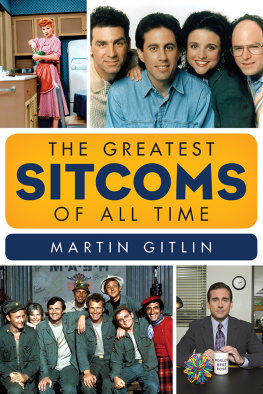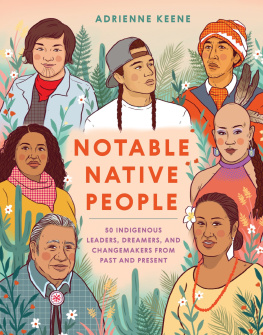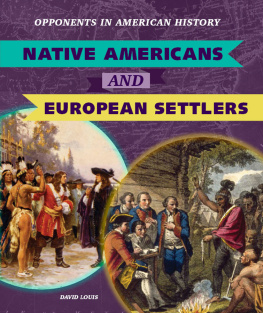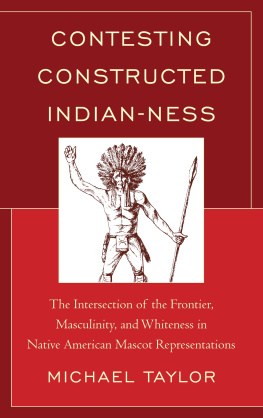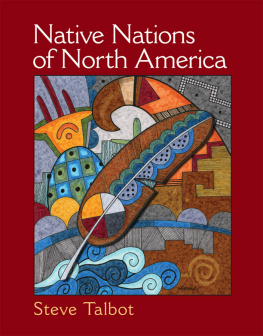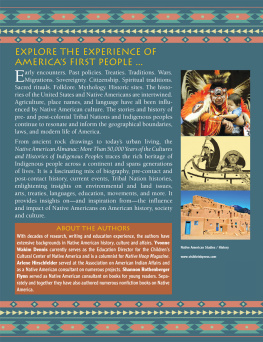This book was published with the assistance of the Anniversary Endowment Fund of the University of North Carolina Press.
2014 The University of North Carolina Press
All rights reserved
Manufactured in the United States of America
Set in Utopia by codeMantra
The paper in this book meets the guidelines for permanence and durability of the Committee on Production Guidelines for Book Longevity of the Council on Library Resources.
The University of North Carolina Press has been a member of the Green Press Initiative since 2003.
Cover illustration: Background vector illustration, 2013 yupiramos; vintage TV from the 1970s, 2012 trekandshoot; Indian Head test pattern, 1938.
Library of Congress Cataloging-in-Publication Data
Tahmahkera, Dustin.
Tribal television : viewing native people in sitcoms / Dustin Tahmahkera.
pages cm
Includes bibliographical references and index.
ISBN 978-1-4696-1868-5 (pbk : alk. paper) ISBN 978-1-4696-1869-2 (ebook)
1. Indians on television. 2. Situation comedies (Television programs)United States.
3. Situation comedies (Television programs)Canada. I. Title.
PN1992.8.I64T34 2014
791.45652997dc23
2014020273
18 17 16 15 14 5 4 3 2 1
Part of this book has been reprinted with permission in revised form from Custers Last Sitcom: Decolonized Viewing of the Sitcoms Indian, American Indian Quarterly 32.3 (2008): 32451.
In memory of Gran, Uncle Steve, and Dr. Campbell
Illustrations
Indian Head Test Pattern, 1938,
Moose TV cast,
Adam Beach replaces Indian Head in Moose TV,
John Redcorn in King of the Hill,
John Redcorn and his band, Big Mountain Fudgecake,
John Redcorn, the childrens entertainer,
Mixed Blessings logo,
Michelle Thrush and Wilma Pelly in Mixed Blessings,
Preface: Sign-on
A Sitcom Kid
N u nahnia tsa Dustin Tahmahkera, suk u Taiboo t u punit u y u y u muhku us u n u tebuuni kut u . My name is Dustin Tahmahkera, and I am a recovering colonized viewer of American television.
I grew up on American sitcoms. I positioned myself from a very young age into half-hour blocks of comedic escapism and entered sitcom worlds seemingly free of real-life violence and chaos and devoid of social and political relevance. I watched reruns of sitcoms like I Love Lucy, The Beverly Hillbillies, Threes Company, Dennis the Menace, Happy Days, and The Brady Bunch. I tuned in the 1985 premiere of Nick at Nite, whose early promotional ad greeted viewers from a concocted site of televisuality (Hello, out there, from TV land!), and saw its airing of sitcom reruns such as The Donna Reed Show, Mister Ed, and My Three Sons. I remember, too, newer sitcoms like Alf, Perfect Strangers, The Cosby Show, and Full House, all of which could later be seen on Nick at Nite. I remember once even sketching out a twenty-four-hour lineup of sitcoms for an all-rerun channel, long before the Nick at Nite spin-off network TV Land swiped my idea in the mid-1990s. But I especially remember, above all else, the definitive 1960s sitcom representative of small-town America: The Andy Griffith Show.
Each weekday Ted Turners superstation, TBS, would air back-to-back episodes of The Andy Griffith Show at 5:05 and 5:35 P.M., Comanche Country time zone, unless an Atlanta Braves baseball game was on with #3 Dale Murphy or #47 Tom Glavine playing before tomahawk-chopping fans. It was not long before I had seen and reseen all 159 black-and-white episodes. (Do the last 90 postDon Knotts color episodes really count?) As a cable-subscribing citizen of what Derek Kompare calls the Rerun Nation, I repeatedly saw Sheriff Andy Taylor and Deputy Barney Fife attempt to Before long, I could mute the volume during episodes and recite, fairly accurately, chunks of dialogue as scenes reran on television.
As far back as I can remember, The Andy Griffith Show and other sitcoms were (long before I heard of a French philosopher named Derrida) always already there, significantly impacting my personal pop culture surroundings. Like Couer dAlene and Spokane author Sherman Alexies self-identification as a sit-com kid whose world outlook is definitely partly shaped by situation comedies, I, too, was a sit-com kid whose worldview has been and continues to be influenced by sitcoms. My personal subjectivities shaped and were shaped by my reception to televised content. Yes, I was entertained through sitcoms on Nick at Nite and other networks, but, as an Anglo settler and indigenous TV watcher, as a dual citizen of the Comanche Nation and the United States (and as a fan and eventually a scholar), I also began years later to recognize and question sitcoms representational influx and diversity of settler characters and, by contrast, rare and repetitious Indian characters intended to represent the indigenous.
Since TV sitcoms began in the late 1940s, their representations of the settlerconstitutive herein of white characters portrayed by white actors whose scripted performance reinscribes on- and offscreen historical and contemporary dominance over the indigenoushave made up the vast majority of starring, secondary, and guest roles. Within the critical frame of settler colonial studies, the sitcoms settler, whether sited in Mayberry or elsewhere across TV land, circulates as, frankly, a most unsettling figure Indianness in broadcasted sitcom narratives is too often marked, as it is in innumerable other media sites, by extreme expectations and extremely few options for what it means to be indigenous and by performative expectations built on centuries of such binaries as savagery/civilization and, as exemplified by the historical dictum Kill the Indian, Save the Man, extermination/assimilation.
In television, the indigenous signifies characters intended to represent Natives, including the dubious indigenous iterations imagined by settler producers. For example, settler characters have often discursively stood in for, or represented, offscreen (that is, absent) Native Peoples. Mr. Furley in Threes Company once prepared for a poker game by placing his fingers behind his head to signify feathers as he said, Poker-hontas. Pinky Tuscadero in Happy Days, much to the Fonzs chagrin, questioned Tontos gender because he wore a feather. Brad Taylor in Home Improvement described Aztecs as killers who cut peoples hearts out.
I have viewed, too, visible Indian representations, that is, characters supposedly signifying Native Peoples, even though they almost never performatively resemble such (and are rarely portrayed by Native actors). I saw
As for The Andy Griffith Show, its overarching dominant narrative aligns with colonial discourse on issues of settlement, pioneer pride and ingenuity, traditional gendered performance, and Americas determined and destined founding. National and local histories, in particular, constitute several episodes story lines. In Andy Discovers America, Sheriff Taylor, the lead settler, explains a vision of America that reinforces a familiar American school version.
The narrative I am sharing so far risks reducing the viewing of sitcoms to being enjoyable or despicable, escapist entertainment or recurring reminders of negative Indian stereotypes, and merely colonizing media texts. But Native audiences, including indigenous sitcom kids, are more complex than the incomplete subject position of colonized viewers allows; sitcoms, like other American popular cultural texts, are more complicated than dichotomous generalizations allow; and televisual representations of the indigenous are more intricate than they may appear upon first viewing. The complexities, intricacies, and complicationsthey are what drive the rest of this book.


